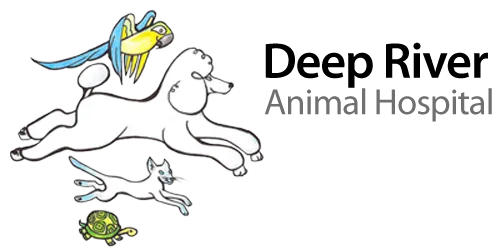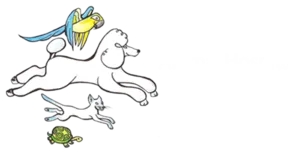Understanding the waxing and waning of fertility in a stud dog can mean the difference between the birth of long awaited puppies, and the chance at missing that lifetime opportunity. A stud dog has many factors contributing to his potency, both in natural and fresh chilled or frozen semen breedings, just as a bitch has many factors in her chance at conception over her lifetime. If a breeder wishes to expand his or her gene pool, either through frozen or fresh chilled breeding, when a natural breeding is impossible, then the fertility of a stud dog is of prime importance.
Unlike the bitch, which is born with as many eggs as she will ever ovulate in her lifetime, a stud dog is continually producing sperm. The general health as well as stress level and other factors, all contribute to the fertility of a stud dog at a particular point in time. It is generally accepted that a stud dog is most fertile once reaching puberty and before middle age. In a medium breed dogs this is generally between 2 and 6 years of age, with toys from 2 until about 7 or 8 years of age and giant breed dogs less than 5 years of age. Larger dogs tend to age faster than smaller dogs, and may have infertility issues crop up at a younger age.
If an owner is concerned about the fertility of his or her stud dog, a test collection is always appropriate. It is important to have an experienced veterinarian like Dr. Chris perform the collection, as comfort and expertise can affect the quality of any given ejaculate. If possible, a bitch in peak estrus is ideal as a teaser to encourage the male to release as high quality a collection as he is capable of producing. If a teaser bitch is not an option, than there are several products available as well as collected swabs from a bitch in estrus that may be useful in obtaining a quality collection. Dr. Chris will encourage the stud dog to mount the teaser bitch and collect at least three fractions of ejaculate into separate tubes using an artificial vagina.
Most dogs ejaculate in three fractions – the first fraction is initially clear to slightly cloudy and before the release of the sperm, the second fraction should be milky white and thick as this is the sperm-rich fraction, the third fraction is the prostatic fraction and should be clear in a healthy dog. It is especially important to collect in three fractions for analysis; components within the first or third fraction may be detrimental to the sperm, and result in a lower fertility rating than is actually true if the three fractions are collected together. For instance, the first fraction may contain urine which can kill sperm, or white or red blood cells, which can indicate infection. If the third fraction contains a large amount of white or red blood cells, the stud dog may have prostatic disease which may be affecting his fertility. By analyzing the three fractions separately, Dr. Chris will be able to determine the sperm count, sperm motility, any abnormalities and percentage of abnormalities of the sperm, and whether or not there is prostatic disease or other infection present. All of these factors must be taken into account when determining the stud dog’s fertility.
When performing the collection, it is imperative that the stud dog be comfortable and display good libido, or interest in mounting the bitch. Many stud dogs, even when experienced at breeding, will display poor libido when having semen collected if they are not used to the procedure. Bringing along familiar objects, such as a breeding mat or using a teaser bitch the dog has bred before, may help the stud dog be more comfortable with the collection. Once a dog has been collected several times under ideal circumstances, he is often easy to collect and produces excellent quality semen. This is extremely important if one is going to use the semen for fresh-chilled or frozen procedures, both of which will decrease the quality of the sperm.
Once the semen has been collected, Dr. Chris will perform a semen analysis. The color, quality and amount of each fraction will be noted. Each fraction will be examined for cellularity and types and quantities of cells noted. If the stud dog has missed impregnating one or more bitches, or if there is a concern that prostatic disease is present, one or more of the fractions should be submitted to a laboratory for a bacterial culture and sensitivity. Finally, the sperm rich fraction will be analyzed for motility (speed and forward movement of the sperm cell), morphology (appearance of the sperm cells and any abnormalities present), quantity (sperm count minus the percentage of non-viable sperm cells), sperm concentration (concentrated versus moderate or dilute), and cellularity (note whether there are white or red blood cells present, epithelial cells, bacteria, etc.).
Color of the sperm rich fraction can vary from yellow (usually contains urine or bacteria which can kill sperm), to red (usually contains red blood cells which do not kill sperm), clear (usually very low sperm count or the stud dog has withheld the release of the sperm), turbid/thin (usually a lower amount of sperm present than average or a very dilute sperm sample), to cloudy/thick (a higher concentration of sperm present).
The motility of the sperm is a subjective determination of Dr. Chris as she observes the sperm on a slide which has been warmed to body temperature. The sperm should move in a forward motion at a reasonable speed to be considered good motility. The percentage of sperm which are forwardly motile at a good speed is determined and can range from 0% to nearly 100%. A high percentage of sperm moving forward at a rapid speed would gain the stud dog an excellent rating for forward motility – this is very important in the consideration of the likelihood of any given collection resulting in conception. Regardless of how the sperm is introduced into the bitch, the sperm cells still need to get to the eggs, and they need speed and forward motion in order to do so.
The morphology, or appearance, of the sperm is also very important. Sperm cells can have abnormalities associated with spermatogenesis, or production of the sperm in the testes, or abnormalities associated with the maturation and transport of the sperm cells. For example, head defects such as small heads, double heads, or large heads, and mid-piece and tail deformities such as droplets, split tails, short tails, and curled tails are all problems associated with the actual production of the sperm. Other abnormalities, such as detached heads and bent tails, are correlated with the transport of the sperm cells. It is important to note the difference, as transport procedures may be modified, but problems with production of the sperm need to be addressed as a problem with the health of the stud dog himself. The health of the stud dog may be related to stress, especially in a “specials” dog with a grueling show schedule, prostatic disease such as prostatitis and prostate cancer, urinary tract and prostate infections, and damage to the testicles themselves through injury or pharmaceuticals.
Of course, not only is quality important but quantity is imperative. The sperm not only have to get there looking good, but there have to be enough of them to get there at all. Normal sperm counts can range from two to three hundred million to as high as one to two billion per ejaculate. To determine the amount of actual viable sperm in an ejaculate, one would take the sperm count, subtract the percentage of abnormal sperm and multiply by the percentage of forwardly motile sperm.
If the sperm count is low, it may be due to a primary problem with the production of sperm or the stud dog may have withheld the release of sperm due to discomfort with the procedure. Stud dogs always have the ability to withhold release of the sperm-rich fraction, so one cannot assume that a low sperm count is the fertility problem when analyzing a semen sample obtained through artificial collection. If, however, libido is high, the dog appears comfortable, he has been collected successfully in the past, there is a good teaser bitch available to him, and he still has a low sperm count, it is likely that there is a primary problem with the production of the sperm itself. At this point, analysis of the three fractions may determine wherein the problem lies.
As mentioned previously, urine within a sperm sample will kill the sperm. It is important to have a stud dog urinate before any breeding or collection to avoid contamination due to a full bladder. Also, urinary tract infections and prostate problems can result in a decrease in the tone of the sphincter muscle which contracts during ejaculation to prevent the mixing of urine and semen. If the sphincter muscle tone is poor, urine can mix with the ejaculate and kill the sperm. Urinary tract and prostate infections can usually be treated with antibiotics, although severe or recurrent infections may require weeks to months of treatment. It is important to obtain one or more bacterial culture and sensitivity reports, and to work with a qualified veterinarian.
Blood can be present within the first fraction due to abrasions on the penis during the collection procedure. The skin on the penis is extremely fragile and may bleed, especially if multiple collections are performed in a short period of time. Blood will not kill sperm, but large quantities of blood within the sperm-rich fraction will decrease the quality of freezing or fresh-chilling the sample. The blood can be centrifuged out of the sperm rich fraction if necessary. Blood in the third fraction, especially in large quantities, indicates prostatic disease. This may be prostate infection, hyperplasia (enlargement of the prostate), or more worrisome, prostate cancer. Cultures, physical examination, biopsies, and ultrasound can all be useful in identifying the type of prostate problem present.
There are many factors which determine an individual stud dog’s fertility at a particular point in his life. Here at Deep River Animal Hospital, Dr. Chris can help a breeder who is experiencing a stud dog with fertility problems. And, of course, it should be noted that it takes two to produce puppies, so one should not automatically assume it is the stud dog’s fault, even if he has missed impregnating more than one bitch. Both the stud dog’s and the brood bitch’s fertility should be evaluated in the case of a breeding which did not result in a viable pregnancy. It is recommended that a stud dog have a fertility exam performed by a Dr. Chris if he is to be used at stud as he gets older and may be producing lower quality sperm. Also, if a stud dog is to be bred using frozen or fresh-chilled semen, the American Kennel Club requires special forms to be submitted when registering the litter. Finally, as already mentioned, it takes two to make puppies – please visit the section on brood bitch fertility for more information on the ladies' contribution to the fertility process.


